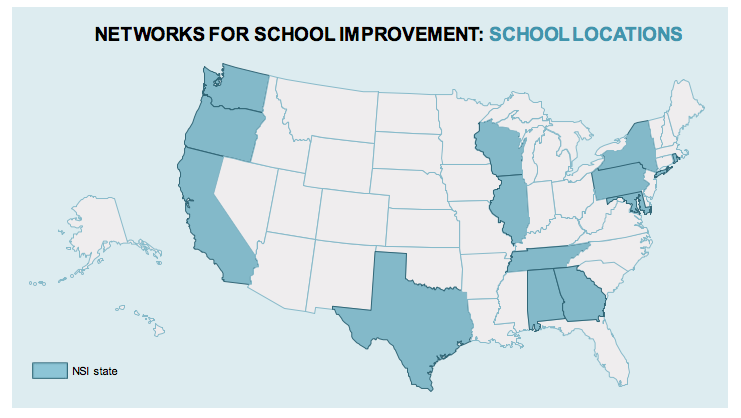Golston: Today’s $90 Million Gates Foundation Grants Are Just a Down Payment on $460 Million to Aid Dozens of Schools & Tens of Thousands of Kids

In a meeting in Chicago last year to talk about efforts to improve Chicago’s public schools, I did a double take at the data being presented. Students in Chicago Public Schools had dramatically increased their high school graduation rate, from 46 percent in 1999 to 74 percent in 2015. Students who had been likely dropouts were now three times as likely to graduate, and students were racking up higher ACT scores and higher GPAs. The question was … how did they do it?
The answer is multifaceted, but a key aspect of the story is networks — schools and their leaders working together to apply research-based data to classroom practice, coaching school leaders, and focusing teams on problem-solving. The practices the networks refined and shared have played a major role in the district’s progress.
There are similar promising examples like this all over the country, where school leaders are connected to one another and use student data to solve common problems that keep young people from successfully completing high school and being ready to succeed in college or career.
That’s why today, the Bill & Melinda Gates Foundation is announcing more than $90 million in grants toward what we call Networks for School Improvement, groups of middle and high schools from around the country that will be working together to address common challenges. Over the next five years, we expect to devote $460 million to this effort to aid dozens more schools and to help tens of thousands of students get the education they deserve.
These networks will allow groups of schools to work directly with supporting organizations — which may be nonprofits, districts, charter management organizations, universities, or community-based organizations — using existing school information to address barriers to student success. Once each network has identified a common barrier, schools will put in place strategies to tackle the problem based on what they know about their students. Each school will refine its strategy using data to assess whether students are more successful as a result of their efforts.
Research tells us that students, as they move through school, can quickly fall off the pathway to graduation and success later in life. Middle school students, for example, can fall disastrously behind when absent from class. Ninth-graders can fail a key course in math or literacy that sets them back and makes graduation almost impossible. If key issues are not addressed in real time, students are less likely to successfully navigate the key transitions between middle and high school or between high school and college or career. And research confirms that this is an equity issue — black, Latino, and low-income students suffer disproportionately from these kinds of setbacks.
The networks approach is not new; the data that so amazed me last year were gathered by the Network for College Success, a joint venture between Chicago Public Schools and the University of Chicago’s Consortium on School Research. Their success, like that of other networks, including the CORE districts in California, has motivated the foundation to help more educators build networks that fit their local context and work together to try to drive student progress.
Over the past 20 years, the Bill & Melinda Gates Foundation and our partners have learned a lot about supporting students, teachers, and schools — at times, because our efforts have fallen short of achieving our goal of improving student outcomes. What we’ve learned has propelled us toward this direct focus on schools.
We see our role as serving as an incubator and catalyst for good ideas that originate in the field. Over time, we hope the approaches these networks implement and refine can be shared with larger groups of schools outside these initial networks. We believe — and research shows — that if we can remove the barriers that schools face and identify approaches that can work in different contexts, significantly more students are likely to graduate from high school, successfully enroll in a postsecondary institution, and be on track in their first year to attain a degree or credential.
The guiding principle that drives the foundation today is the same that it’s been since we began our work in education: All students, and especially low-income students and students of color, must have equal access to a great public education that prepares them for success in adulthood. As these networks of schools work to support their students, our foundation will continue to learn right alongside them.
Allan Golston is president of the U.S. Program at the Bill & Melinda Gates Foundation.
Disclosure: The Bill & Melinda Gates Foundation provides financial support to The 74.
Get stories like these delivered straight to your inbox. Sign up for The 74 Newsletter

;)